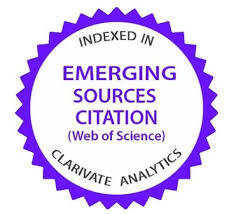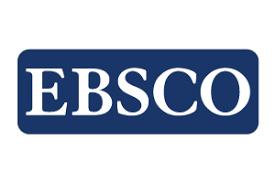Knowledge and learning of indigenous languages in rural and urban high schools in the state of Puebla, Mexico
DOI:
https://doi.org/10.35197/rx.12.01.e3.2016.25.brKeywords:
inequality, intercultural education, poverty, ethnic groupsAbstract
For this study, high schools were selected in contrasting conditions: one high school in an urban region, and three high schools located in an indigenous municipality, in conditions of poverty and marginalization. The total sample size was defined at 195 students. The results show that there is greater variability in the origin of the students in the urban high school. The majority of the students in the general sample (59.3%) speak an indigenous language and are almost entirely in the rural municipality, where Totonac and Nahuatl are mainly spoken. Approximately 30% of the students are taking indigenous language courses in high school. These courses are taught in two of the rural schools run by non-governmental organizations. 85.3% of the students would be interested in learning an indigenous language, but the motivation is mainly cultural.
Downloads
References
Baronnet B. (2013). Lenguas y participación comunitaria en la educación indígena en México. AIBR Revista de Antropología Iberoamericana. Volumen 8, Número 2. Mayo - Agosto. Pp. 183 - 208
Comboni S., Juárez J. M., Tarrío M., (2005) Resurgimiento cultural indígena: el pueblo Ayuujk de Santa María Tlahuitoltepec, Mixe, Oaxaca. El Bachillerato Integral Comunitario Ayuujk Polivalente. Revista Latinoamericana de Estudios Educativos (México) XXXV (1ero-2do trimestres)
Consejo Nacional de Evaluación de la Política de Desarrollo Social. 2014. La pobreza en la población indígena de México, 2012. México, DF: CONEVAL.
Chi H. (2010) “AQUÍ HABLO MAYA, PERO ALLÁ DEBO HABLAR ESPAÑOL” Las luchas de la lengua maya y el español en Naranjal Poniente. Desafíos para la enseñanza de lengua maya en la educación superior. Tellus, año 10, n. 19, p. 211-224
Deance, Iván, & Vázquez Valdés, Verónica. (2010). La lengua originaria ante el modelo intercultural en la Universidad Intercultural del Estado de Puebla. Cuicuilco, 17(48), 35-47.
Del Carpio Ovando Karla, Del Carpio Ovando Perla Shiomara. 2014. Creando una comunidad a través de la enseñanza de lenguas: la diversidad lingüística y cultural como herramienta para tener armonía en el aula. Revista Internacional de Alfabetización y Aprendizaje de Idiomas, Vol. 1, No. 1, pp. 15- 21.
Díaz, C., Gracida Y., y Sule T. (2014) Luces y sombras de la educación lingüística en México. En C. Lomas (Ed.), La educación lingüística, entre el deseo y la realidad. Competencias comunicativas y enseñanza del lenguaje. FLACSO. México.
Durin, S. (2008) Promotores interculturales y agentes étnicos. Las dos caras del maestro bilingüe en el medio rural. En G. Dietz, R.G. Mendoza, y S. Téllez (Eds.), Multiculturalismo, educación y intercultural y derechos indígenas en las Américas. Ediciones Abya-Yala. Ecuador.
Köster, Anne (2016). Educación asequible, accesible, aceptable y adaptable para los pueblos indígenas en México: Una revisión estadística. Alteridad, 11(1), pp. 33-52.
Ley General de Derechos Lingüísticos de los Pueblos Indígenas de los Estados Unidos Mexicanos (2003). http://www.diputados.gob.mx/LeyesBiblio/pdf/257_171215.pdf
Navarrete F. 2008. Los pueblos indígenas de México CDI. 141 p.
Nussbaum L., y Unamuno V. (2008) (2014) Luces y sombras de la educación plurilingüe en España y América latina. En C. Lomas (Ed.), La educación lingüística, entre el deseo y la realidad. Competencias comunicativas y enseñanza del lenguaje. FLACSO. México.
Poblete, R. (2005) Educación intercultural bilingüe y pensamiento indigenista. En T. Fernández y J.G. Molina (Eds.), Multiculturalidad y educación. Teorías, ámbitos, prácticas. Alianza Editorial. España.
Tiburcio C. y Jiménez Y. (2016). Un caso atípico en la enseñanza de lenguas indígenas: el tutunakú de Coahuitlán, Veracruz. Revista Interamericana de Educación de Adultos Año 38, número 1, enero - junio
Velasco S. (2015). La escolaridad de los docentes indígenas de México (Un recuento de los datos a finales de la primera década del siglo XXI). Revista Interamericana de Educación de Adultos Año 37, número 2, junio-diciembre
Downloads
Published
How to Cite
Issue
Section
License
Copyright (c) 2016 Benito Ramírez Valverde, Pía Fernanda Suárez Vallejos

This work is licensed under a Creative Commons Attribution-NonCommercial 4.0 International License.
Usted es libre de:
- Compartir — copiar y redistribuir el material en cualquier medio o formato
- Adaptar — remezclar, transformar y construir a partir del material
- La licenciante no puede revocar estas libertades en tanto usted siga los términos de la licencia
Bajo los siguientes términos:
- Atribución — Usted debe dar crédito de manera adecuada , brindar un enlace a la licencia, e indicar si se han realizado cambios . Puede hacerlo en cualquier forma razonable, pero no de forma tal que sugiera que usted o su uso tienen el apoyo de la licenciante.
- NoComercial — Usted no puede hacer uso del material con propósitos comerciales .
- No hay restricciones adicionales — No puede aplicar términos legales ni medidas tecnológicas que restrinjan legalmente a otras a hacer cualquier uso permitido por la licencia.








